NCERT Solutions Class 9 Science Chapter 10 - Work and Energy
NCERT Solutions for Class 9 Science Chapter 10 – Work and Energy are essential for understanding key Physics concepts in the CBSE curriculum. These well-structured answers help students grasp topics like the concept of work, types of energy, power, and the law of conservation of energy. Designed as per the latest syllabus, these solutions strengthen conceptual clarity and improve exam preparation. Ideal for revision and practice, they encourage logical thinking and scientific understanding, making them a valuable study tool for scoring well in Class 9 Science exams.
NCERT Solutions Class 9 Science – Work and Energy – Exercise Images
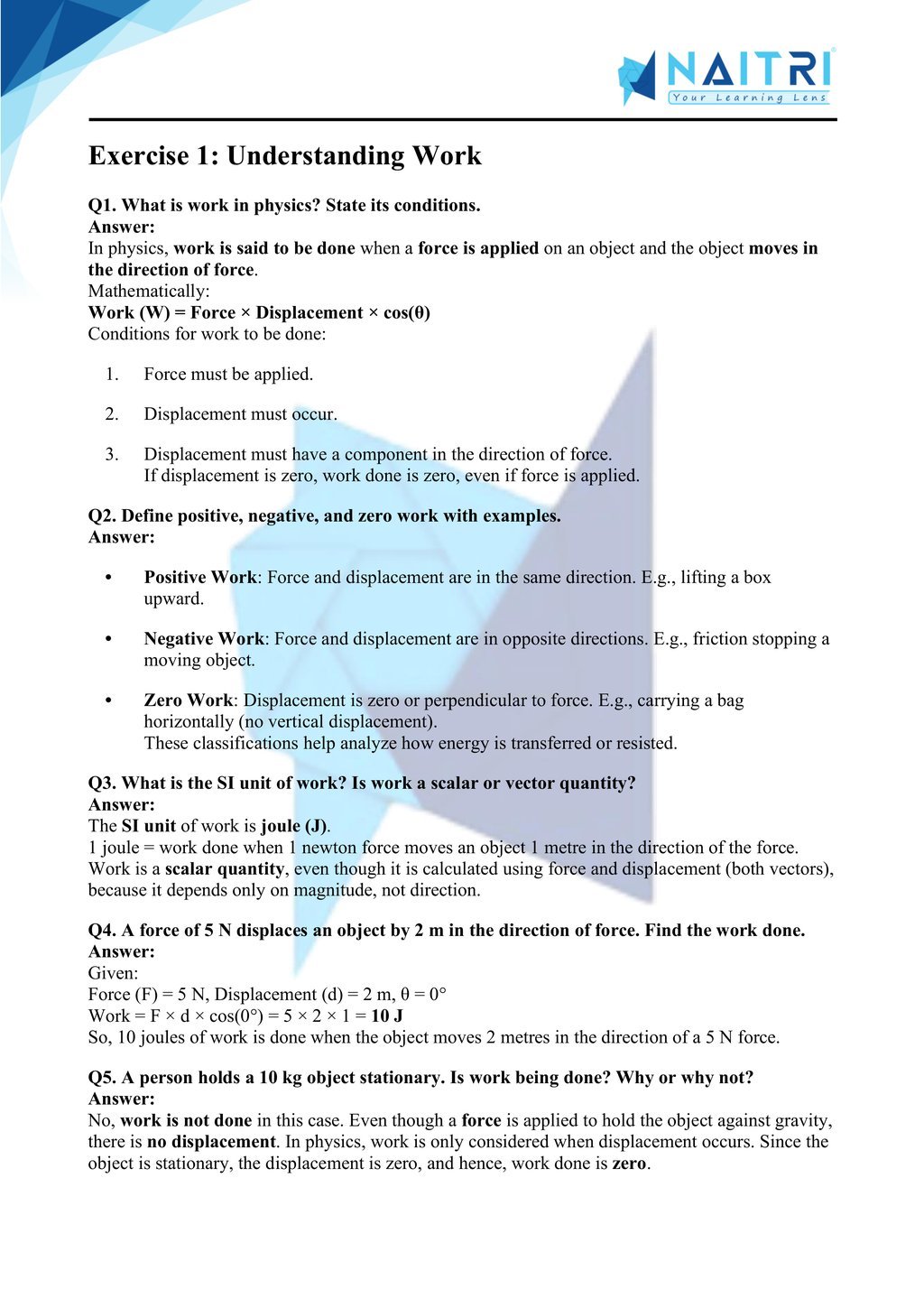
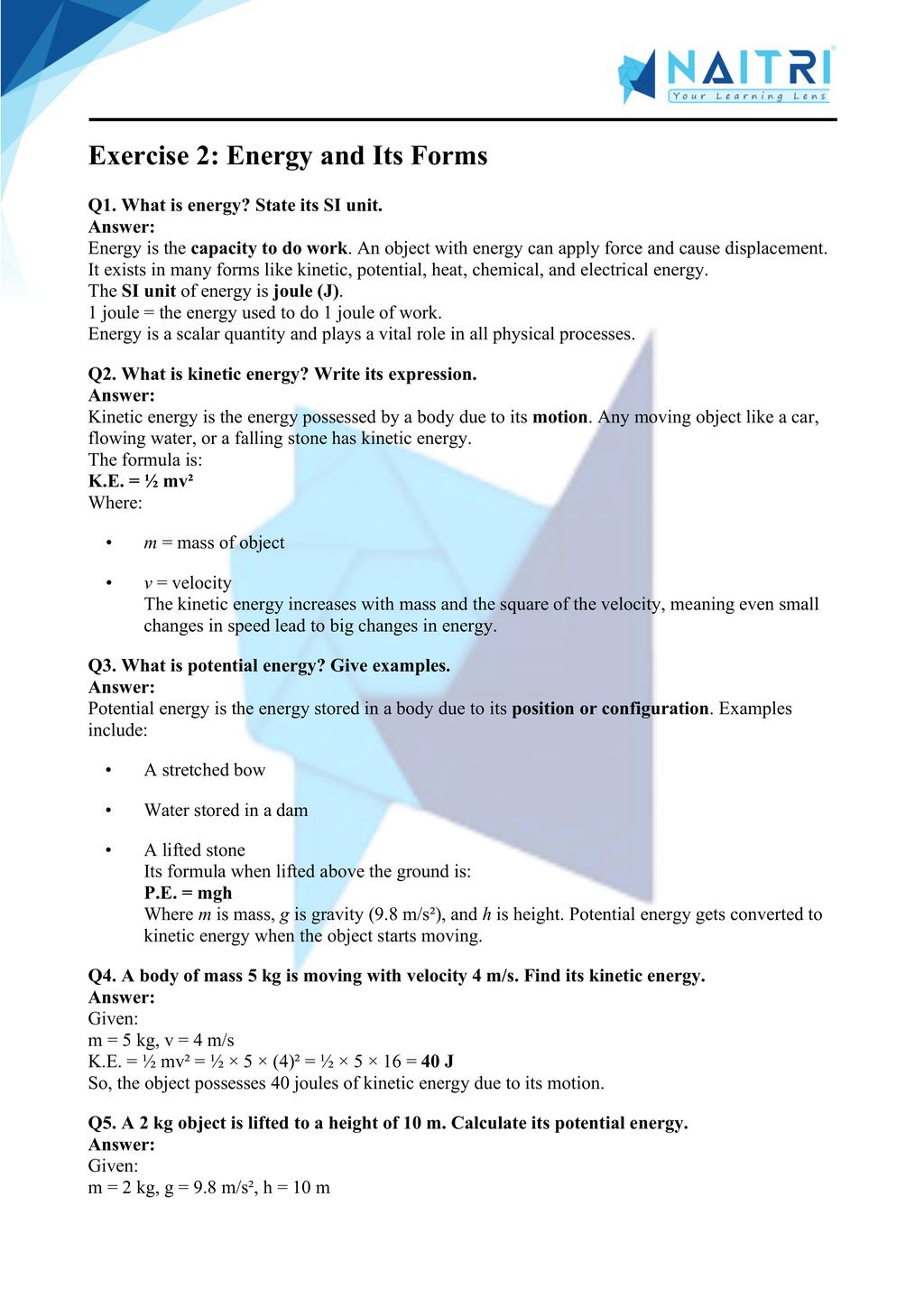
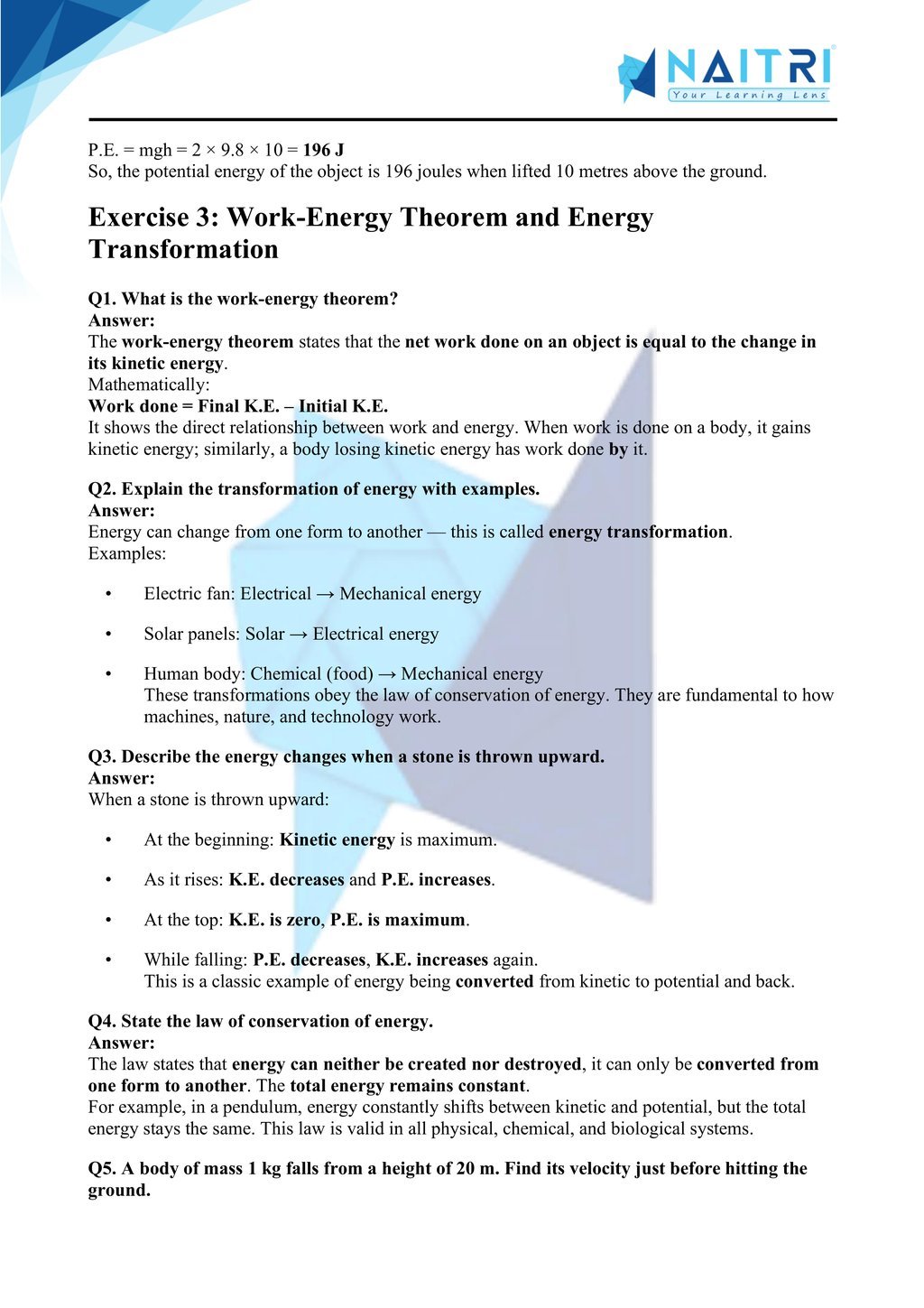
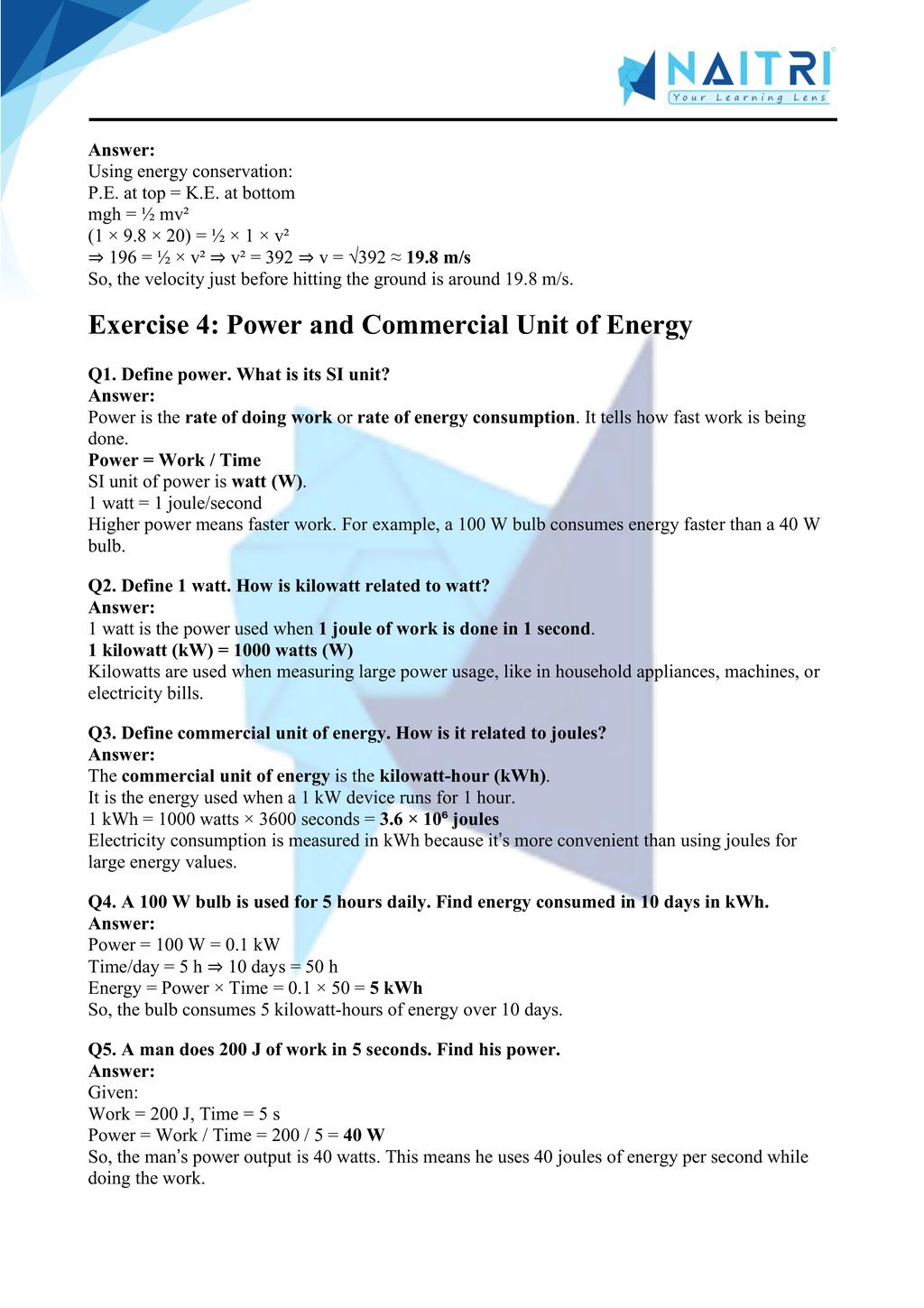
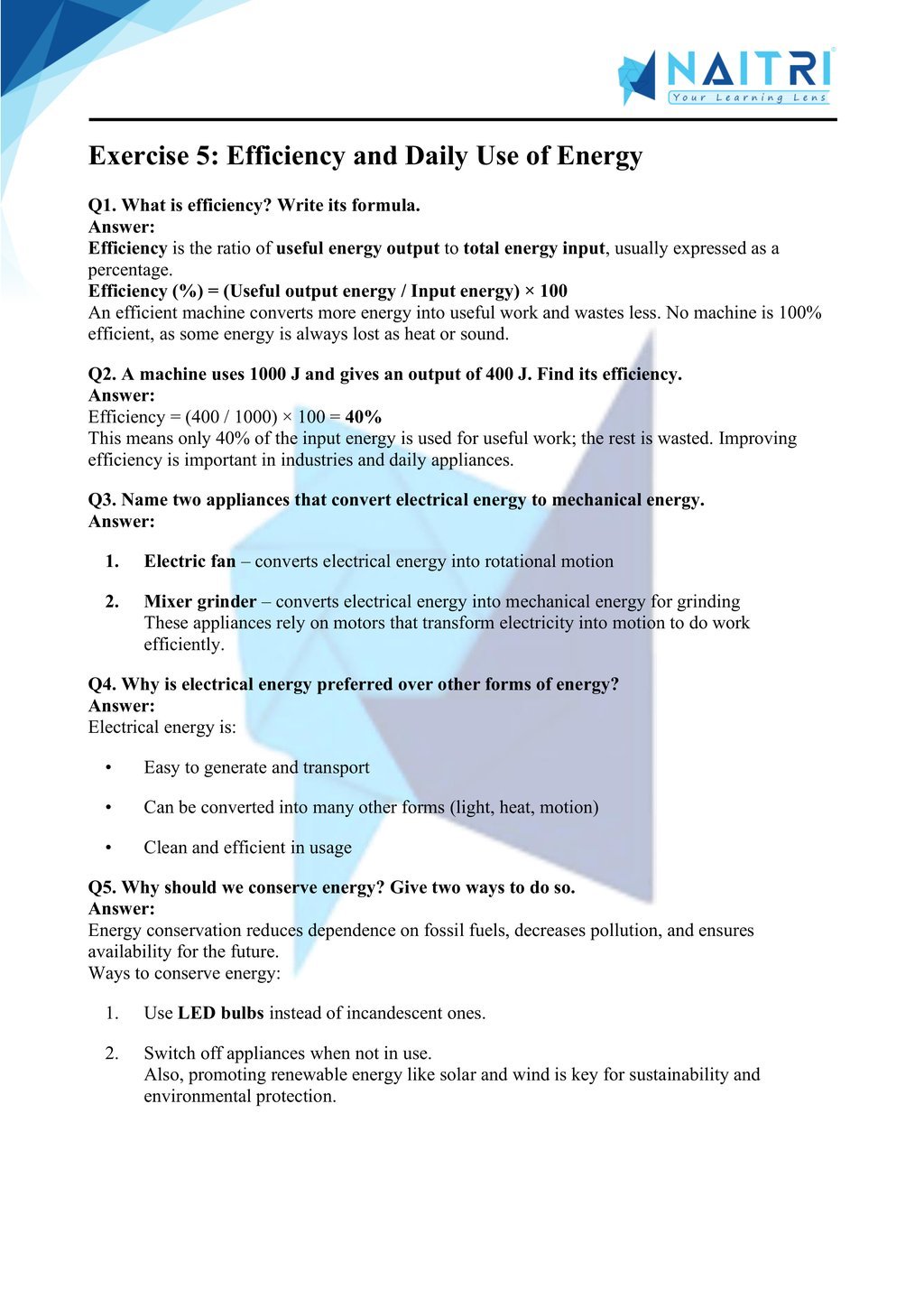
Experience Science Like Never Before – With AR!
Understanding Work and Energy is now more exciting and immersive! With the NAITRI App, you can explore complex science concepts through Augmented Reality (AR). See objects fall, orbits form, and buoyancy play out — right in front of you. Our AR-powered lessons make learning interactive, 3D, and fun, helping you retain concepts better and enjoy every topic.



Visualize . Interact . Understand . The future of learning is here
Work and Energy – Important Questions with Answers
1. Define work.
Answer: Work is said to be done when a force is applied on an object and the object is displaced in the direction of the force.
Work = Force × Displacement × cosθ
2. What is the SI unit of work?
Answer: The SI unit of work is joule (J).
3. When is work said to be positive, negative, or zero?
Answer:
Positive work: Force and displacement are in the same direction.
Negative work: Force and displacement are in opposite directions.
Zero work: Displacement is zero or force is perpendicular to displacement.
4. Define 1 joule of work.
Answer: 1 joule is the work done when a force of 1 newton displaces an object by 1 metre in the direction of the force.
5. What is power?
Answer: Power is the rate of doing work.
Power = Work / Time
6. What is the SI unit of power?
Answer: Watt (W)
7. Define 1 watt.
Answer: Power is 1 watt when 1 joule of work is done in 1 second.
8. Define commercial unit of energy.
Answer: The commercial unit of energy is kilowatt-hour (kWh).
1 kWh = 1000 watts × 3600 seconds = 3.6 × 10⁶ joules
9. What is energy?
Answer: Energy is the capacity to do work. It exists in various forms like kinetic energy, potential energy, etc.
10. What is kinetic energy?
Answer: Kinetic energy is the energy possessed by a body due to its motion.
KE = ½mv²
11. What is potential energy?
Answer: Potential energy is the energy possessed by a body due to its position or configuration.
PE = mgh
12. A ball of mass 2 kg is moving at 3 m/s. Find its kinetic energy.
Answer:
KE = ½ × 2 × 3² = 9 J
13. A 5 kg object is lifted to a height of 4 m. Find its potential energy. (Take g = 10 m/s²)
Answer:
PE = mgh = 5 × 10 × 4 = 200 J
14. What is the Law of Conservation of Energy?
Answer: Energy can neither be created nor destroyed; it can only change from one form to another. The total energy remains constant.
15. What are the conditions for work to be done?
Answer:
A force must be applied.
The object must be displaced.
The displacement must have a component in the direction of the force.
16. Name some forms of energy.
Answer: Heat energy, light energy, electrical energy, chemical energy, nuclear energy, etc.
17. What is mechanical energy?
Answer: The sum of kinetic and potential energy is called mechanical energy.
18. A body of 1 kg is lifted to a height of 10 m. What is the work done against gravity?
Answer:
W = mgh = 1 × 9.8 × 10 = 98 J
19. What do you mean by transformation of energy?
Answer: The process of changing one form of energy into another is called transformation of energy.
Example: Electrical energy to heat in an iron.
20. What is the average power?
Answer: Average power is the total work done divided by the total time taken.
21. What is instantaneous power?
Answer: Instantaneous power is the power at a particular moment.
22. What is the unit of energy in the SI system?
Answer: Joule (J)
23. Define kilowatt.
Answer: 1 kilowatt (kW) = 1000 watts
24. How is commercial energy consumption calculated?
Answer: Commercial consumption is usually measured in kilowatt-hour (kWh), also known as one unit.
25. State the relation between work, energy, and power.
Answer:
Work and energy have the same unit and are numerically equal when work is done.
Power = Energy / Time
Work and Energy focuses on the relationship between force, motion, and energy. Students learn about the conditions under which work is done, different forms of energy, power, and the law of conservation of energy. Real-world applications, such as energy efficiency and use of machines, are also discussed. This chapter is key for understanding broader physical and environmental concepts like energy resources and sustainability.
Related Chapters You May Like
- Chapter – 1 Matter in Our Surroundings
- Chapter – 2 Is Matter Around Us Pure
- Chapter – 3 Atoms and Molecules
- Chapter – 4 Structure of the Atom
- Chapter – 5 The Fundamental Unit of Life
- Chapter – 6 Tissues
- Chapter – 7 Motion
- Chapter – 8 Force and Laws of Motion
- Chapter – 9 Gravitation
- Chapter – 11 Sound
- Chapter – 12 Improvement in Food Resources
Download Naitri App
Easy, Visual Learning — Right on Your Phone
Learn with Augmented Reality! The Naitri app makes CBSE and MP Board concepts interactive and fun — even in low-resource settings. Watch lessons, complete homework, take tests, and track progress — all in one place. Anytime. Anywhere.
Available on








